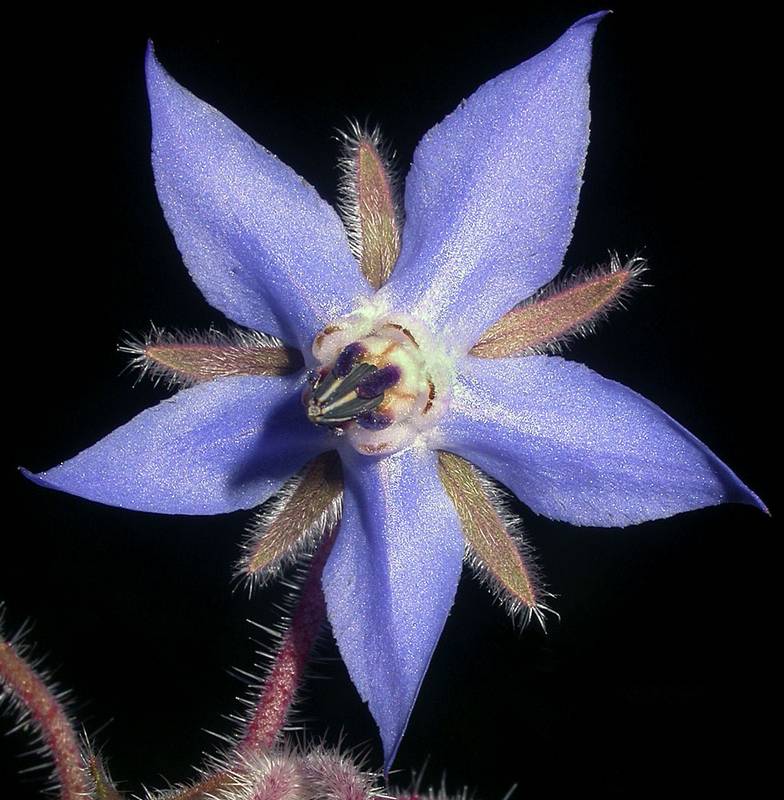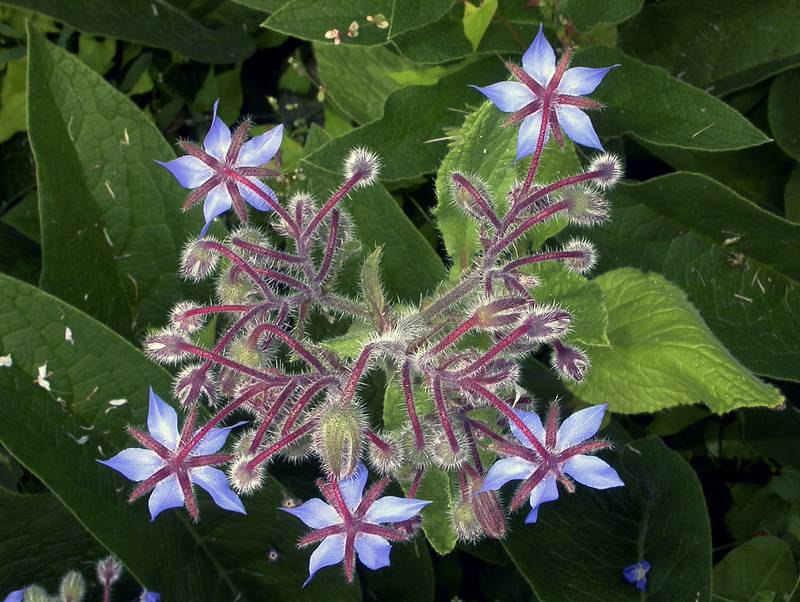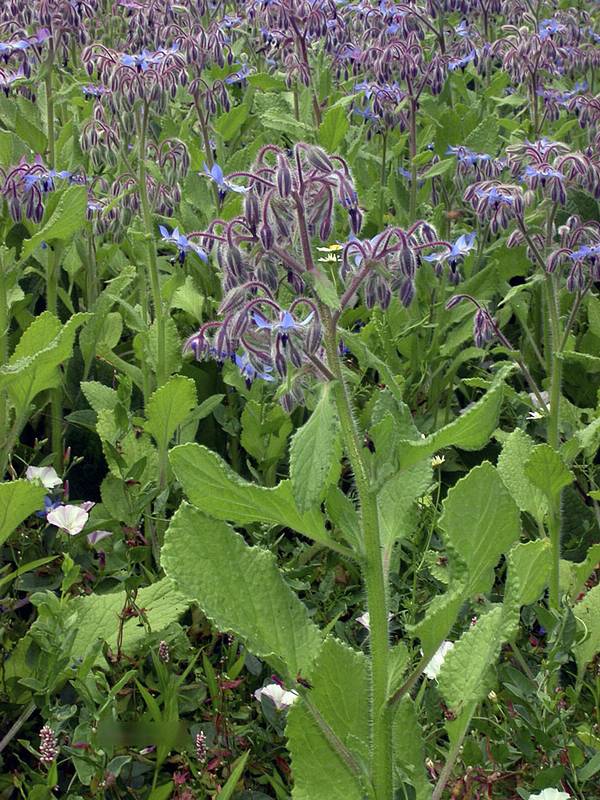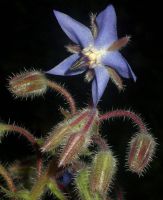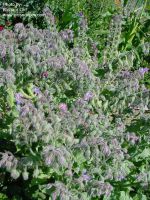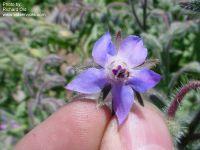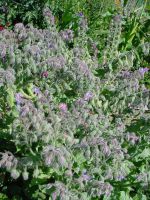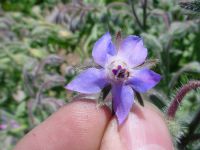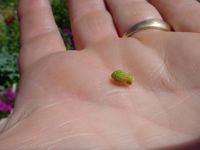Distribution: Occurring chiefly west of the Cascades crest in Washington; Alaska to California, east across the northern U.S. and Canada to the Atlantic Coast.
Habitat: Waste ground and disturbed soil.
Flowers: April-June
Origin: Introduced from southern Europe
Growth Duration: Annual
Conservation Status: Not of concern
Pollination: Bees, flies
Taprooted annuals, the stems 2-6 dm. tall, covered with pungent bristles.
Leaves alternate, the lower petiolate, the blade broadly elliptic to oblanceolate, 3-11 cm. long and 2-6 cm. wide; cauline leaves reduced upward, becoming sessile and often clasping.
Inflorescence a loose, terminal cyme, leafy-bracteate below; pedicles 1-4 cm. long, recurved in fruit; sepals 5, narrow, densely bristly, 1-1.5 cm. long; corolla blue, rotate, 2 cm. wide, with 5 acute lobes; fornices well developed; filaments 5, attached at the level of the fornices, prolonged past the base of the anther into appendages 3 mm. long.
Nutlets 4, nearly cylindric, 4-5 mm. long, attached basally by a projection that fits into a pit.
Publication: Sp. Pl. 1: 137. 1753.
PNW Herbaria: Specimen records of Borago officinalis in the Consortium of Pacific Northwest Herbaria database
WA Flora Checklist: Borago officinalis checklist entry
OregonFlora: Borago officinalis information
E-Flora BC: Borago officinalis atlas page
CalPhotos: Borago officinalis photos

